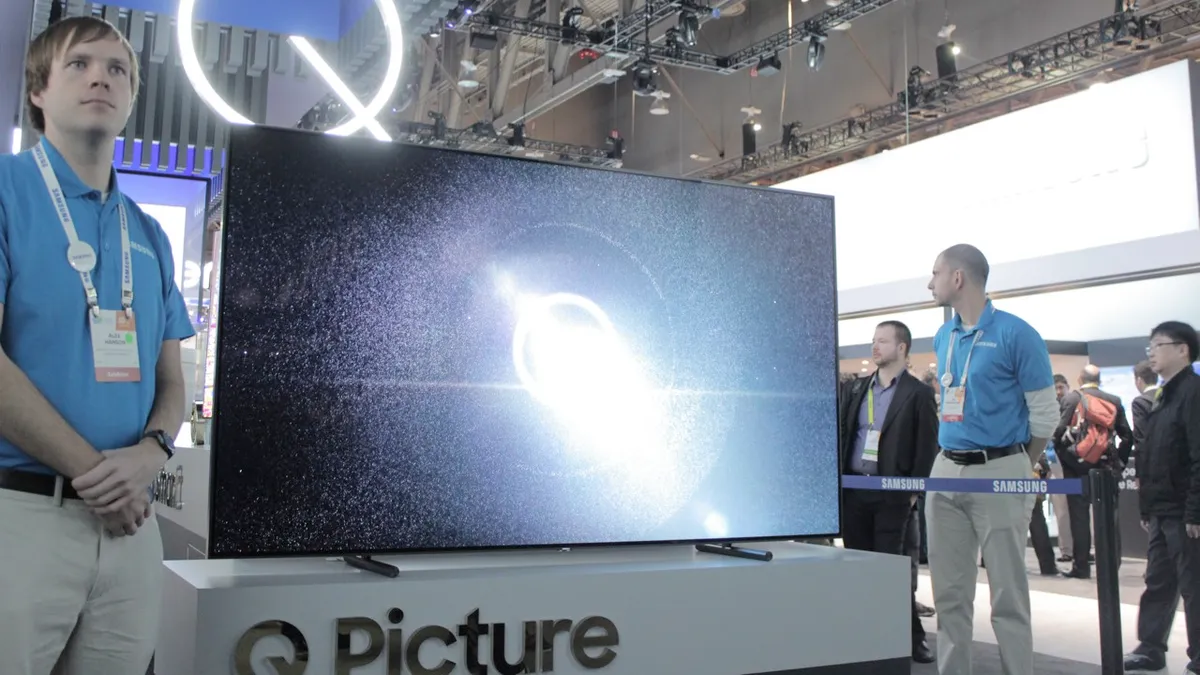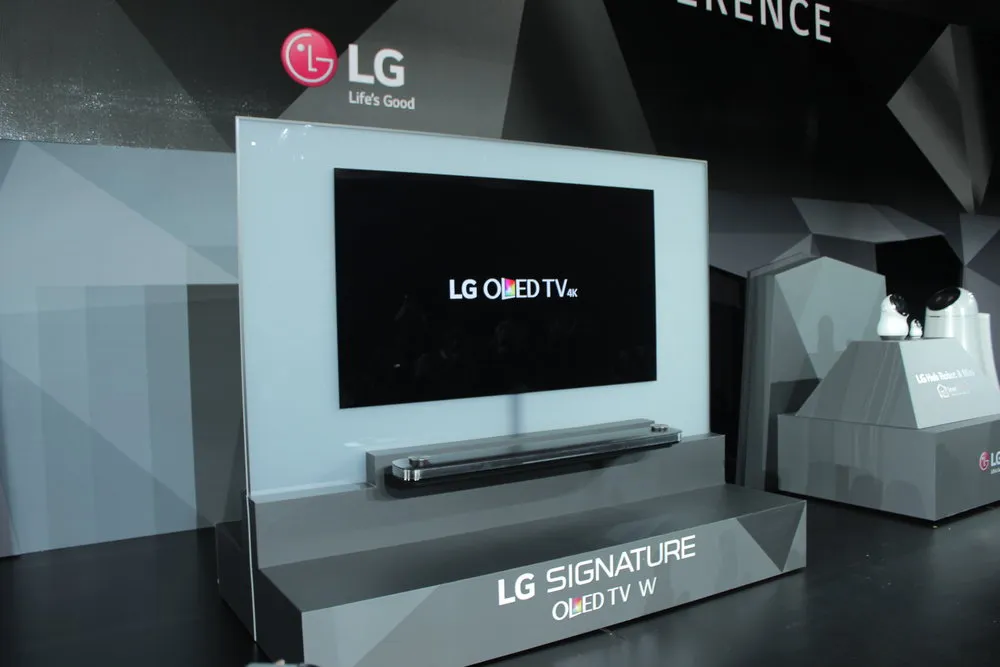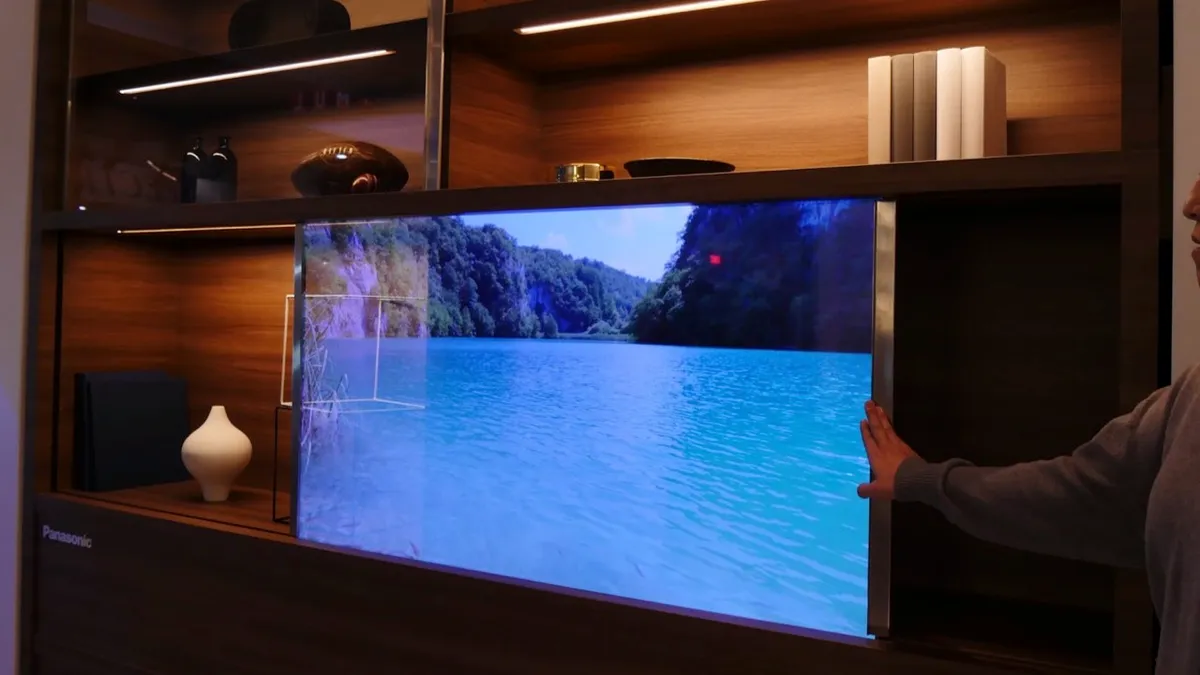Adding to the bright lights of the world’s casino capital, the likes of Sony, Samsung, LG and HiSense announced their brand new televisions - introducing new innovations for providing mind-blowingly crystal-clear pictures and minimal design to blend into your home.
However, with more than 40 different TVs on show at CES 2017, with a brightness sure to blind attendees just as much as the glitz and glamour of the Strip, it’s only fair to narrow that list down to five - five of the most innovative screens that are sure to satisfy your pursuit for pixel pleasure.
Samsung QLED TVs

After a somewhat “explosive year” for Samsung, the company needed to bounce back. They did so by humbly introducing “the next innovation in TV.”
Their new line-up of 4K UHD TVs bring a new type of quantum dot to the fight, which results in breathtaking levels of brightness (2,000 nits - huge because the biggest criticism of OLED is the lack of brightness), what they claim to be “100 per cent colour volume,” and the ability to produce deeper blacks than ever before seen in a Samsung television.
Now I know the first question - “what’s a colour volume?” Yes, they really did roll out some vague non-sequiturs during their press conference, but let’s break it down.
Nearly all TVs run in the RGB colour space (also known as DCI P3), because all colours you could ever need can be made with a mix of specific shades of red, green and blue. Most screens up to this point have been able to reproduce around 75 per cent of this RGB colour space. Samsung, on the other hand, state they can hit 99 per cent of the colour space - that’s colourful.
Add to this a minimal design, which connects the screen to a breakout box for your cables via a near-invisible wire, and you’ve got yourself a seriously tasty TV.
Finally, two new features are coming to the SmartHUB TV - Sports, which gives you the chance to follow your favourite team’s happenings and Music, following the footsteps of Shazam to identify songs as they’re played on TV.
Sony Bravia A1E

For the first time in their big consumer TVs, Sony is dropping LCD in favour for OLED. It’s a big admission from the company, but when you see the picture it’s clear they’ve made the right choice.
Rocking an ultra-thin screen profile with the brains packed into the picture fame-esque stand, the 4K picture looks incredible in the new Bravia A1E series of TVs, presenting deep, colour-saturated pictures with good brightness.
But Sony’s great work doesn’t stop at just what you see, they’ve managed to pack what they call “acoustic surface” technology into the TV, which turns the entire OLED screen into a giant speaker.
Yes, you read that right - the screen is a speaker! In tandem with a subwoofer added into the stand, this TV needs to be seen (and heard) to be believed. All of those complaints about tinny sound from other flat screens are gone in the face of this.
A great design and focus on the complete entertainment experience, thanks to some nifty sound innovation - all round good effort from Sony.
The show floor rep confirmed you can expect to see these TVs go on sale later this year, but no price confirmed (although it’s fair to assume it won’t be cheap).
LG Signature OLED TV W

So while Samsung has focussed on their Quantum Dot technology and Sony brought great sound quality to the flat screen TV, what USP is LG going to bring to this battle?
Well, the “W” in the name refers to the TV’s internal nickname of “Wallpaper.” It’s super thin - at just 2.57mm, the LG Signature OLED TV W is thinner than most pieces of cardboard.
It’s so thin, in fact, that it needs to be wall-mounted using magnets - not sticking out and causing unsightly shadows, just becoming one with the wall.
With something this thin, where does the I/O go? All the gubbins have been crammed into a sound bar that is connected to the screen via a flat wire cable.
In one of the most ergonomically advanced consumer screens we’ve ever seen, they haven’t forgotten about the picture and sound, including Dolby Vision, Active HDR (support for various HDR standards to give the best colour picture), and Dolby Atmos 3D surround sound.
And with a WebOS interface (miss you, Palm), they are providing a strong platform to supply users with 4K content and make their purchase worth it.
In terms of availability and price, signs are pointing to Spring and A Lot.
Samsung Lifestyle TV

For this one, I’m going off-script. I know you’re salivating for specs, but in terms of sheer head-turning power, Samsung’s Lifestyle TV was a showstopper.
Take a look at the picture above, and chances are you can’t spot which of these pictures are actually TVs without squinting hard.
In an effort to make technology disappear into the living room, this Lifestyle TV serves as a two-in-one: turn it on for all your programming goodness, but turn it off and it will display a surprisingly convincing work of art at a brightness and contrast to match the rest of your wall art.
Zero word on pricing and availability yet, plus, Samsung wouldn’t confirm if this is based on the QLED technology (even though it was in the QLED section of their stand), but colour me interested in seeing more of this type of design.
FYI: it’s the centre picture of the three trees and the landscape in the top left.
Panasonic Invisible

While Panasonic may not have officially announced a consumer TV, they did just one-up Samsung’s Lifestyle screen with this 55-inch glass cabinet door-come-TV that they call the “Invisible Library.”
There is an OLED screen embedded in the completely transparent door of this cabinet, meaning you can keep all your precious items on full display while watching the football - all in one device.
While this may just be a prototype and details are very thin on the ground, one Panasonic guy on the stand claimed we can expect something like this to be available in the next “three to five years.”
Follow Science Focus onTwitter,Facebook, Instagramand Flipboard
